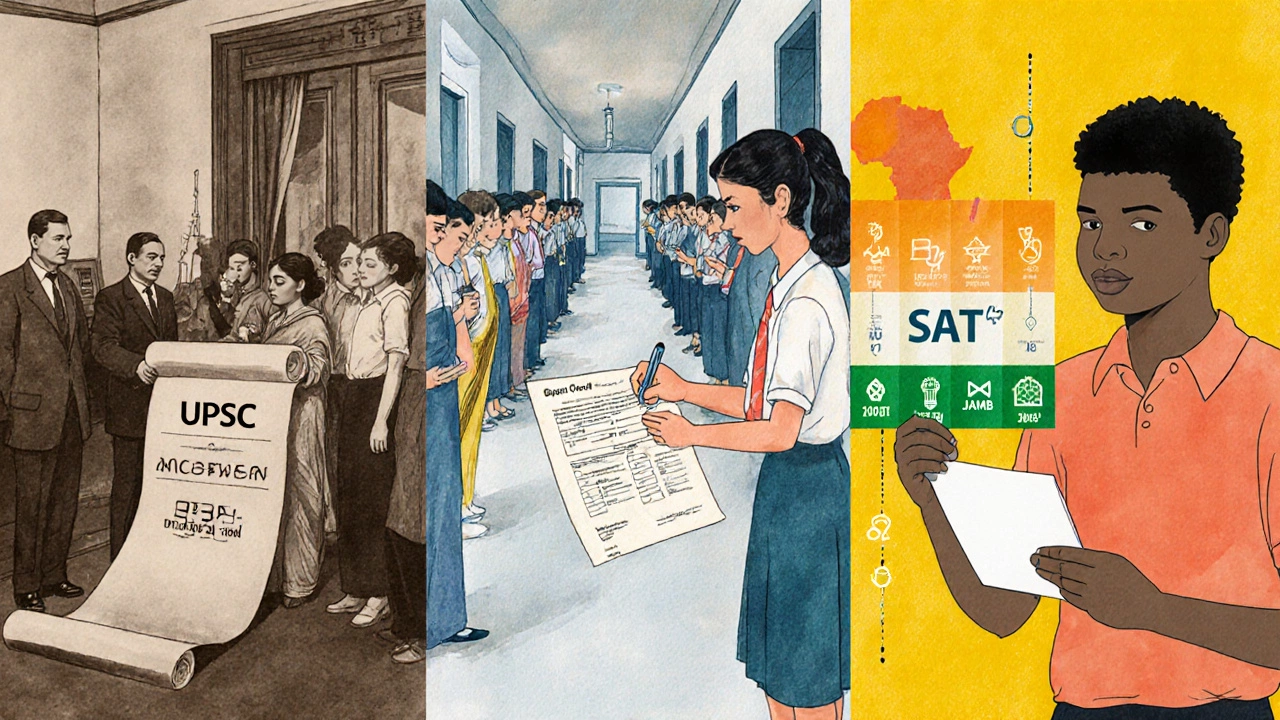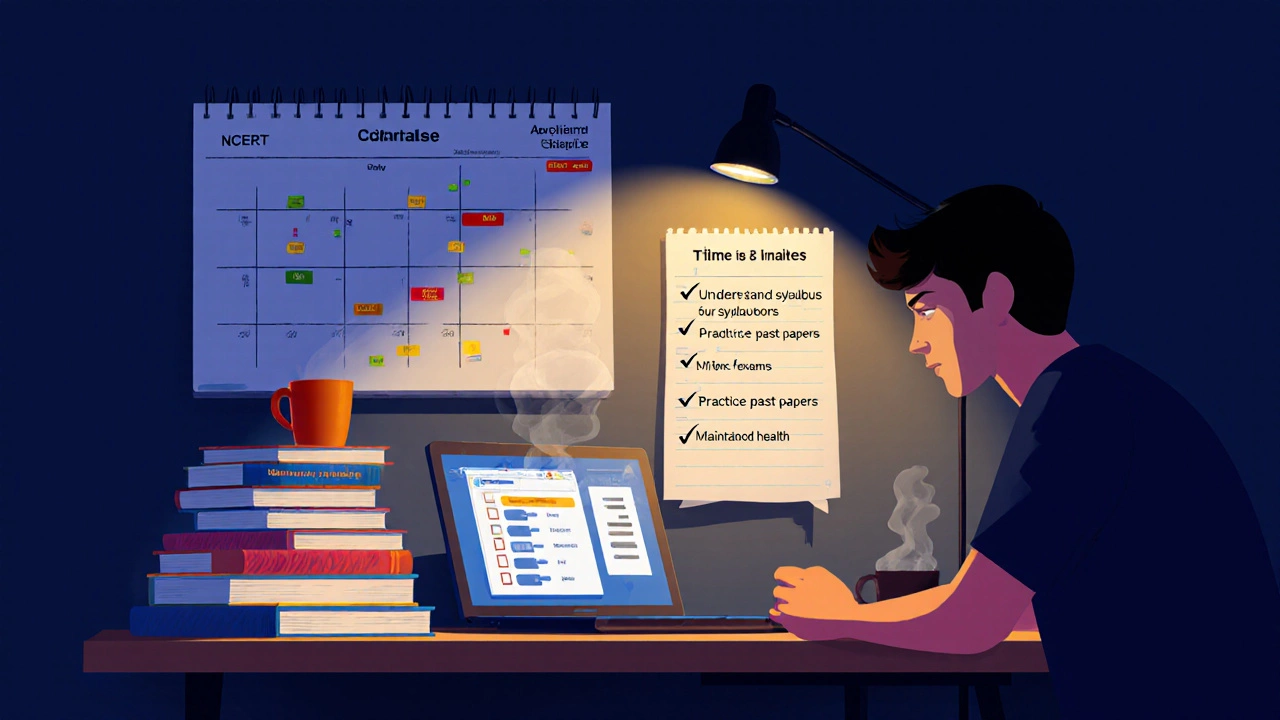Eligibility Checker for Open Competitive Exams
Check your basic eligibility for popular open competitive examinations worldwide. This tool provides a simplified eligibility assessment based on common criteria.
Open competitive examination sounds formal, but at its core it’s just a public test anyone who meets basic criteria can take to earn a limited spot or a government job.
What Exactly Is an Open Competitive Examination?
When we talk about an Open Competitive Examination is a publicly announced assessment that allows any eligible candidate to compete for a limited number of positions or seats, based purely on merit, we mean a test that follows three simple rules: it’s open, it’s competitive, and it’s merit‑based.
This model differs from invitation‑only tests where only pre‑selected candidates are allowed to sit. Think of it as a level playing field: the government or an institution publishes the exam, sets the eligibility, and anyone who qualifies can apply.
How Did Open Competitive Exams Evolve?
The concept dates back to the early 20th century when colonial administrations needed a neutral way to recruit civil servants. India’s Union Public Service Commission (UPSC) launched its first open exam in 1922, aiming to replace patronage with merit. Over the decades, the model spread to education (e.g., the SAT in the United States) and professional licensing (e.g., the bar exam).
Today, more than 50 countries run at least one open competitive exam for public‑sector jobs, university admissions, and even scholarships.
Key Characteristics You Should Know
- Open: The announcement is public, usually through official websites, newspapers, or education portals.
- Competitive: Seats or positions are limited, so many candidates vie for the same slot.
- Merit‑Based: Scores determine ranking; no interview or quota can override a higher score (unless specific reservation policies apply).
- Standardized: The same syllabus, question paper, and evaluation criteria apply to every applicant.
- Transparent: Results are published, and appeal mechanisms exist for grievances.

Major Types of Open Competitive Examinations Worldwide
| Exam | Governing Body | Primary Purpose | Frequency |
|---|---|---|---|
| UPSC Civil Services Examination | Union Public Service Commission (India) | Recruitment for IAS, IPS, IFS and other services | Annual |
| JEE Main & Advanced | National Testing Agency (India) | Admission to engineering colleges (IIT, NIT, etc.) | Twice a year |
| SAT | College Board (USA) | College admissions eligibility | Several dates throughout the year |
| NEET | National Testing Agency (India) | Admission to MBBS and BDS programs | Annual |
| PSC General Competitive Examination | Public Service Commission (various countries) | Entry‑level civil service posts | Annual or bi‑annual |
| JAMB (Joint Admissions and Matriculation Board) | JAMB (Nigeria) | University admission for undergraduate programs | Annual |
Typical Eligibility Criteria
While the exact requirements differ, most open competitive exams share these baseline conditions:
- Nationality or legal residency (e.g., Indian citizens for UPSC, U.S. citizens or permanent residents for SAT).
- Age limits - usually a minimum of 18 years and an upper cap between 28 and 35 years for civil‑service exams.
- Educational qualification - a high‑school diploma or equivalent is the bare minimum; professional exams may demand a bachelor’s degree.
- No criminal record - many public‑sector exams require a clean background check.
- Specific subject prerequisites - engineering entrance tests often demand physics and mathematics at the +2 level.
Why Choose an Open Competitive Examination?
For aspirants, the appeal lies in fairness and transparency. Because the process is standardized, you can gauge exactly where you stand against thousands of peers.
Governments also love this model; it minimizes nepotism and provides a quantifiable talent pool.
Additionally, the open format encourages widespread dissemination of study material. Online forums, official mock tests, and coaching institutes thrive, giving you plenty of resources.

Step‑by‑Step Guide to Prepare Effectively
Preparation isn’t magic; it’s a systematic routine. Follow these steps to boost your odds:
- Understand the syllabus. Download the official syllabus from the governing body’s website (e.g., UPSC releases a detailed PDF each year).
- Create a realistic timeline. Allocate 3‑4 months for high‑school subjects, 2 months for optional subjects, and 1 month for mock exams.
- Gather the right study material. Use standard textbooks, government‑published guidelines, and reputable coaching notes. For engineering exams, NCERT and H.C. Verma are staples; for SAT, the College Board’s Official Guide is essential.
- Practice with past papers. Solving at least five years of previous question sets helps you spot patterns and manage time.
- Take timed mock tests. Simulate the real exam environment. Analyze errors and adjust your study plan accordingly.
- Stay updated on exam notifications. Dates, changes in pattern, or new eligibility clauses are posted on official portals. Missing a deadline can cost you the chance to sit the exam.
- Maintain health. Sleep 7‑8 hours, stay hydrated, and include short breaks in your study schedule to avoid burnout.
Common Pitfalls and How to Avoid Them
- Last‑minute cramming. Open exams reward consistency. A solid 2‑hour daily habit beats a weekend marathon.
- Ignoring the official syllabus. Coaches may suggest extra topics, but scoring comes from covered material.
- Over‑reliance on a single resource. Cross‑reference concepts; different books explain ideas in varied ways.
- Neglecting mock test analysis. Simply taking a mock isn’t enough; review each mistake and note the underlying reason.
- Skipping the application process. Errors in filling the online form (wrong DOB, missing documents) can lead to disqualification before you even sit the paper.
Frequently Asked Questions
What does “open” mean in an open competitive examination?
“Open” indicates that the exam invitation is public. Anyone who meets the basic eligibility (age, education, nationality) can apply, unlike invite‑only tests that limit participants to a pre‑selected group.
How often are these exams conducted?
Frequency varies by exam. Most civil‑service exams are annual, engineering entrance tests like JEE are held twice a year, and the SAT offers multiple dates throughout the year.
Can I retake an open competitive exam if I fail?
Yes. Most governing bodies allow unlimited attempts, though some impose age caps or a maximum number of attempts for certain positions.
Do I need a professional coaching institute?
Coaching can help, but it isn’t mandatory. With disciplined self‑study, official materials, and online mock tests, many candidates succeed without expensive courses.
What are the most common subjects covered?
Languages (English, regional language), mathematics, general science, and reasoning are nearly universal. Specific exams add specialized subjects: biology for NEET, physics/chemistry for JEE, and current affairs for civil services.





